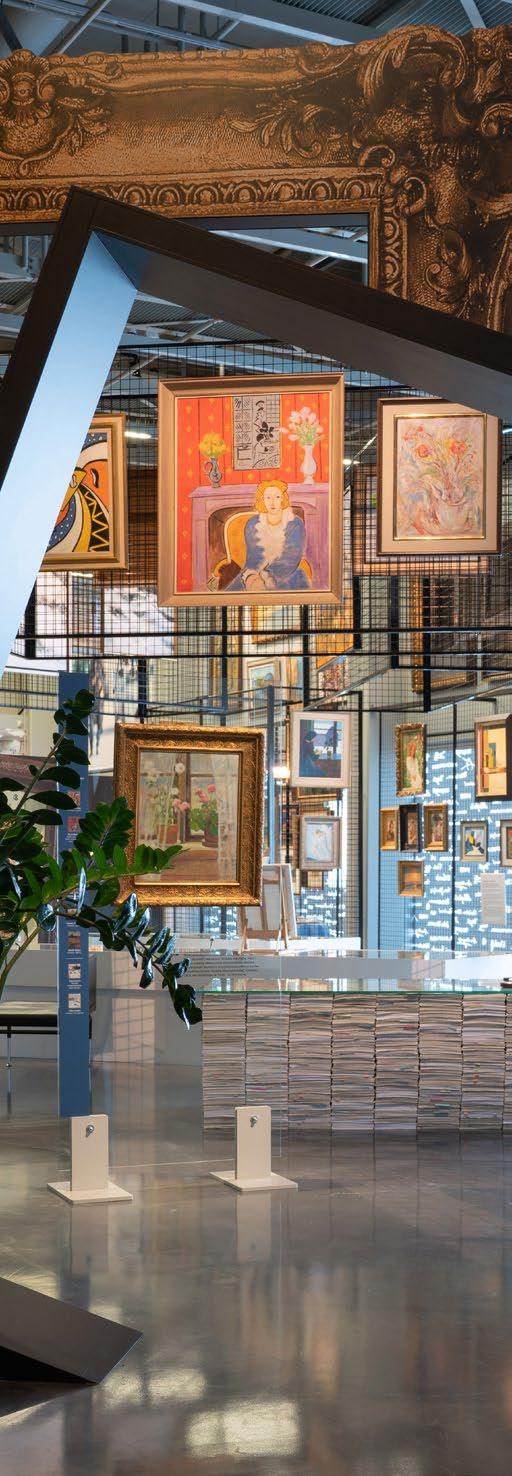


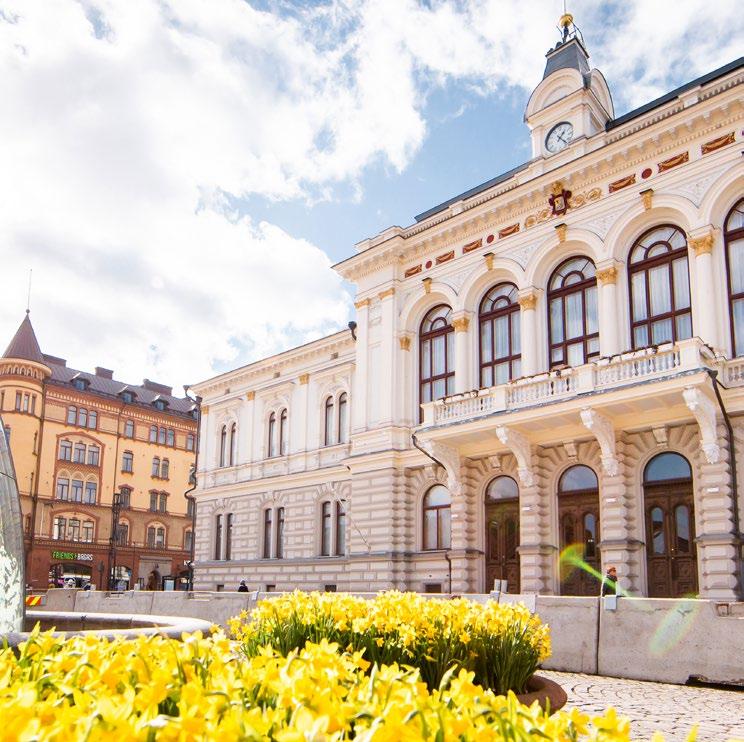


MAGAZINE FOR VISITORS 2/2021 IN THIS ISSUE The Winter(Sport)’s Tale Page 10 A brief introduction to Finnishness Page 14 Art crime and police work –Police Museum is something for the whole family Page 23 Hello darkness my old friend Page 30 A column by RomAn SchAtz Enjoy your stay! please leave this magazine for the next guest –thank you!

Tampere!
#visittampere
Get inspired by
Share your favorites on social media with
For culture lovers
You’ll be in museum heaven at Museum Centre Vapriikki, with it’s exhibitions ranging from games to ice hockey and natural history. Or, get Back to the 20s at Museum Milavida. To sense the magical atmosphere in Tove Jansson’s original drawings head to Moomin Museum. If you’re in the mood for live music, Tampere has some excellent venues like G Livelab, Tullikamari, Olympia Quarter, Tampere Hall and of course, the UROS Live Arena opening in December. Tampere is also the theatre capital of Finland!

The great outdoors
In Tampere, the lakeside starts from the city centre, and so do the forests. Breathe some fresh forest air in Pyynikki nature reserve. Go up the hill to the old observation tower and marvel at the views to lakes Pyhäjärvi and Näsijärvi. While you’re there, don’t forget to try the world’s best doughnuts in the café! Did you know there are also two big national parks in the vicinity of Tampere: Seitseminen and Helvetinjärvi.
Savor the food
Are you Hungry for Tampere? Find your favorite dishes from vast range of restaurants in the city. Local, organic, vegan, burgers, wings, oriental… Tampere has it all. Not to mention the breweries! Make sure you also visit the 120-year-old Market Hall. hungryfortampere.com


Explore with the family
Check out Tampere’s newest museum, Industry Museum, to learn about our industrial heritage. At Tallipiha Stable Yards, you can buy some gifts or chocolate and enjoy the lovely milieu. For fun indoor activities visit one of the city’s many escape rooms, get to know the various shopping centres or try laser tag and other fun games at ZBase Entertainment Center.
Tampere is the place to experience sauna culture as the city region has over 50 public saunas to visit. Here are some of our favourites, not far from the city centre.
Rajaportti
The oldest public sauna in Finland. Here you can relax in a traditional sauna atmosphere. Let the locals show you how it’s done!
Kuuma sauna & restaurant
Kuuma is one of the newest additions to Tampere sauna scene. Enjoy the heat, dip into the Ratina bay and have some food or drinks afterwards.
Kaupinoja and Rauhaniemi
These lakeside saunas are loved by both locals and visitors. Hole in the ice? Jump in!


Check out more at visittampere.fi
Photos: Laura Vanzo
Tampere – the Sauna Capital of the World!
#saunacapital


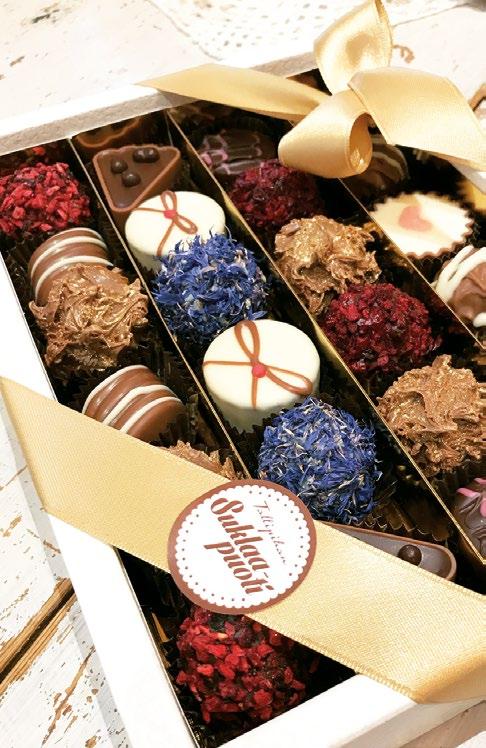



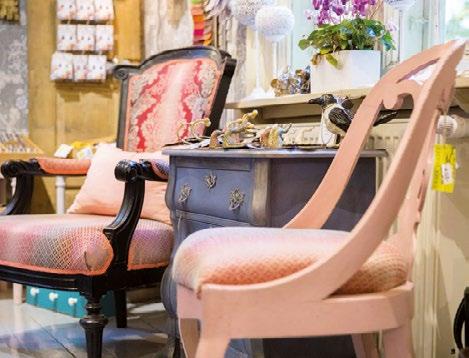
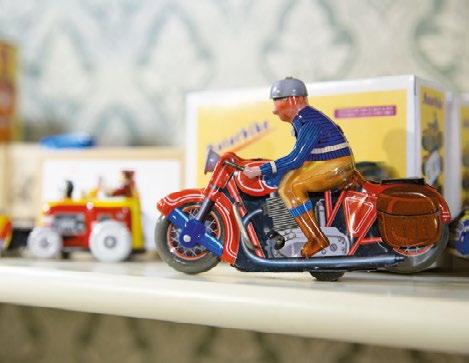
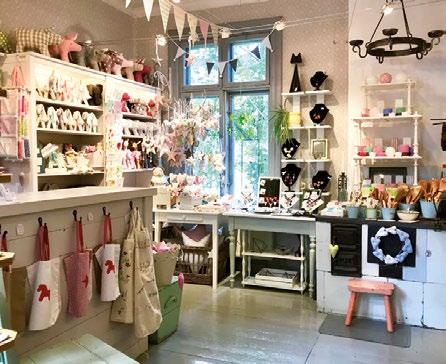
2
SHOPPING CENTRE RATINA
THE BIGGEST SHOPPING EXPERIENCE IN TAMPERE CITY CENTRE



Over 100 shops and the best brands in Tampere!





Food, fashion, beauty, home decor & much more!


















 Vuolteenkatu 1, TAMPERE Next to the Tampere Bus Station – 5 minutes from the Tampere Railway Station ratina.fi kauppakeskusratina kauppakeskus_ratina
Vuolteenkatu 1, TAMPERE Next to the Tampere Bus Station – 5 minutes from the Tampere Railway Station ratina.fi kauppakeskusratina kauppakeskus_ratina
3
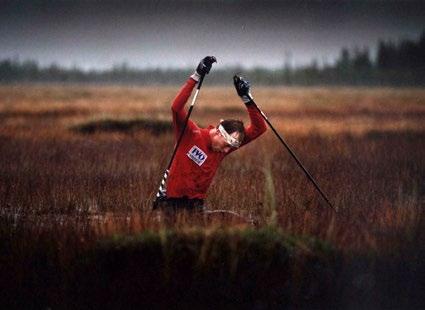


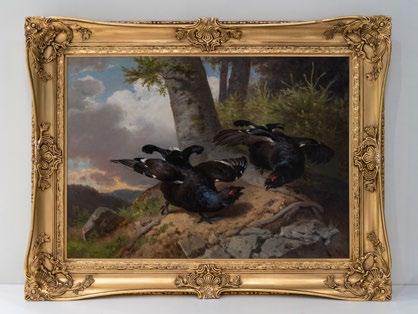


30 CONTENTS Tampere – A rugged beauty bursting with energy 8 The Winter(Sport)’s Tale 10 A brief introduction to Finnishness 14 Map of Tampere 18 Hotels & hostels providing Tampere Times 20 Art crime and police work 23 Tampere in a nutshell 28 Hello darkness my old friend 30 Enjoy your stay! – Column by Roman Schatz 32 Tampere Times Magazine for Visitors Issue 2/2021 Autumn-Winter-Spring www.tamperetimes.fi ISSN 2343-3817 (print) ISSN 2669-8293 (online) Published by Mobile-Kustannus Oy Brahenkatu 14 D 94 FI-20100 Turku, Finland Editor in chief Roope Lipasti Publisher Teemu Jaakonkoski Sales manager Raimo Kurki raimo.kurki@mobilekustannus.fi Tel. +358 45 656 7216 Graphic design & layout Petteri Mero Mainostoimisto Knok Oy Printed by Newprint Oy Cover photos Rauhaniemi.
Laura Vanzo / Visit
Pispala.
Tampere Times map application for mobile phones and tablets: www.tamperetimes.fi The magazine is available in hotel and hostel rooms in the city of Tampere (see page 20). The next issue will be out in April 2022. 10 23 32 6
Photo:
Tampere Café
Photo: Laura Vanzo / Visit Tampere Narcissus flowers in the spring. Photo: Laura Vanzo / Visit Tampere Kehräsaari. Photo: Laura Vanzo / Visit Tampere Roman Schatz. Photo: Marek Sabogal





Ideas & experiences! WELCOME TO LEMPÄÄLÄ AND BE SPORTY & ENJOY THE EXCITEMENT OF SPORTS 15 minutes ONLY FROM TAMPERE CENTRE VISITLEMPAALA.FI LEMPAALA.IDEAPARK.FI STORES, RESTAURANTS AND CAFÉS IN IDEAPARK 170 INDOOR KARTING & ACTIVITY PARK SKIDIPARK ENJOY & RELAX 4
Tampere - A rugged beauty bursting with energy

By reputation, Tampere is a rugged beauty between two lakes. Here the heritage of an old industrial city intertwines with the new, energetic trends of a modern university city, and the nobility of a cultural city with the charms of a city with a young population.
For tourists Tampere offers plenty to see and experience: our latest addition is a new, state-of-the art Uros Live Arena for sports, music and events right in the city centre, easily accessible by train from all over Finland.
So where would I take a visitor in Tampere?
We would start by walking along the banks of the Tammerkoski rapids, admiring the flowing water and the red-brick buildings on its edge. The city was founded in 1779 on the banks of the Tammerkoski rapids as a city that granted free trade rights to craftsmen, merchants, and entrepreneurs. In the 19th century, the small village grew into the largest industrial city in the Nordic countries, a city of cotton and linen weavers, shoemakers, and machine builders.
Only one of the factories remain in its original use, namely the TAKO paper mill on the banks below the rapids. Other factory buildings boast activities typical of the 21st century Tampere: culture, cafés, movie theatres, museums, galleries, and companies in the media and creative sectors.
From the “old city” of Tammerkoski, I would take my visitor to the bustle of Hämeenkatu Street and its surroundings to enjoy a selection of department stores and boutiques. We would also visit the university campus and Tampere Hall, home to Tampere Philharmonic Orchestra and the world’s first Moomin museum.
Today, Tampere is a busy city of trade, culture, and education that has a population of over 240,000. According to a recent study
Tampere is the most attractive city to move to, so we expect the figure to grow! While the universities and other educational institutions bring students and young people to our city, also the diverse business sector attracts employees to the region. While we have a large number of companies operating in the ICT, health and wellbeing, and creative sectors, some manufacturing industry operators remain, for example mechanical engineering companies.
A good tour includes a peaceful break, so next I would probably take my visitors to the Tampere Cathedral to enjoy the atmosphere and admire the frescoes of Hugo Simberg. The tour would continue to the Saturday market in Tammela for coffee or black sausages, a local delicacy.
From the market we would hop on our brand new tram, and travel towards the slopes of Pyynikki and Pispala to enjoy a walk and see what the world’s highest gravel esker looks like, and to admire the beauty of Lakes Näsijärvi and Pyhäjärvi. The alleys of Pispala also show a different side of Tampere, with its old cottages and the unique and lively community of the locals. Walking back we might stop by Tampere Art Museum to enjoy a little afternoon art.
In the evening I would take my visitor to the theatre or in the summer to the Särkänniemi Amusement Park. Unless my visitor is a sports fan, in which case we would go to a football match or to an ice hockey match in the new Uros Live Arena – maybe the men’s ice hockey World Championships Tampere is hosting in the spring of 2022.
In any case, our tour would end with an excellent meal in one of the city centre’s many fine restaurants. And after that, we could continue to a club to enjoy good music and the beautiful sunset over the rapids and the lakes of Tampere. s
photo: K R i S ti A n t e R vo
Anna-Kaisa Ikonen mAyoR of tAmpeRe
8
In the 19th century, the small village grew into the largest industrial city in the Nordic countries.



ALMOST THERE! COME AND SEE WHAT WE HAVE ALREADY CREATED. SPECIALIZED STORES WELLNESS AND EXPERIENCES RESTAURANTS AND CAFES TULLIKATU 6, TAMPERE 100 METERS FROM RAILWAY STATION tullintori tampereen_tullintori tullintori.fi ARNOLDS | BABA’S KITCHEN | BRANDER | CUBE | EAST ASIA MART | FITNESS24SEVEN | FYSIOS | HAIRLEKIINI INKKARI | IRTI MAASTA | K-MARKET TULLINTORI | KAIKU | KUVATIKKAUS & PAITAPAINO | LUOLASEIKKAILU MAMMA GOTCHI | MEGAZONE | PARTURI-KAMPAAMO TULLINTORIN TEAM | PRISON ISLAND | PUFF TAMPERE | PITSA SPECI | PYYMÄEN TULLINTORI | SUKKA-ASU | TAMPEREEN KAUPUNGIN TYÖLLISYYS- JA KASVUPALVELUT TERVEYSTALO | TULLINSUU | THAI RAVINTOLA MING ZHU | TULLINTORIN APTEEKKI TUNNELIN KENKÄ | VUOKRASTUDIO.FI / PROXIMAX | VIIALAN KOTILEIPOMO WE ARE OPEN! PART OF THE CITY’S CULTURE SINCE 1930 #tullintori #tampereentullintori #sekolmaskauppakeskus #supportyourlocal Tampereen Tullintori LOCAL ATMOSPHERE Renovation in progress, 5
Arctic heroes meet the Bard

The Winter(Sport)’s Tale
Written by Matti Mäkelä
translated by alex ahlgren & OWen F. WitesMan
The best ski jumper of all time, Matti Nykänen, who won four Olympic gold medals in the 1980s, six world championships and 46 World Cup competitions, is perhaps the most Shakespearian of Finnish winter sports heroes, combining Hamlet and Falstaff in the same person. Hamlet is especially known for his distinctive monologues (as well as for seeing ghosts), whereas Nykänen’s specialty was his endless supply of seemingly senseless one-liners (“life is man’s best time”, “the odds are fifty-sixty”).
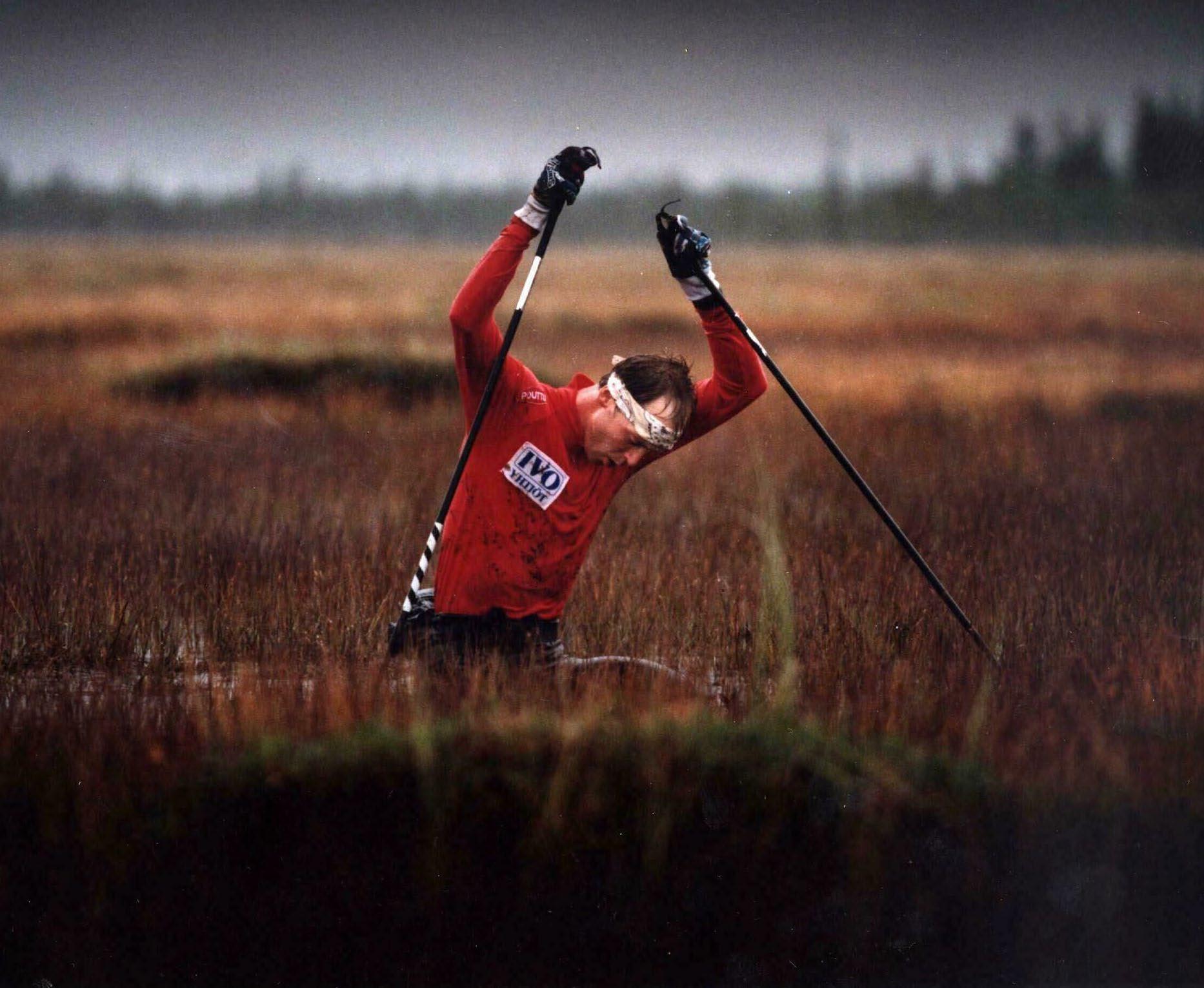
Above: Mika Myllylä practising in the bog in his hometown
,
/ lehtiKuvA 10
The history of Finnish winter sports is full of grand emotions, tragedy and larger-than-life characters. Just like Shakespeare’s plays.
Haapajärvi. photo: hAnneS heiKuRA
hS
In addition to his success in sports, Nykänen’s popularity was based – just like Falstaff’s, perhaps Shakespeare’s most beloved character – on his role as a sympathetic knave and bon vivant. Nykänen’s legendary escapades included leaving in the middle of the training season for a beach party vacation, then flying straight from there to the World Championships and winning a silver medal. Unfortunately, after his sports career ended, alcoholism, violence and jail time changed the story from a rollicking comedy into a tragedy, which ended with Nykänen’s death at the age of 55. Nykänen’s oft-used nickname “ski jumping’s Dr. Jekyll and Mr. Hyde” tells you everything you need to know.

A gReAt mAn succumbing to his own ambitions and weaknesses is typical of Shakespeare’s characters, the most well-known examples of which are Richard III and Macbeth. In the history of Finnish skiing, this will forever be the story of Mika Myllylä . Myllylä became every Finn’s hero by winning the men’s 30 kilometer cross-country skiing Olympic gold medal in 1998 and three world championships in 1999. However, what was anticipated to be the crowning achievement of Myllylä’s career, the 2001 World Championship in Lahti, Finland, was overshadowed by a doping scandal, which turned this national hero into a national traitor. Like Nykänen, Myllylä’s life was difficult after the end of his sports career, including drunk driving and assault convictions. Myllylä’s life ended in an accident at only 41 years old.
Myllylä was not the only Finnish athlete to be busted using banned substances at the Lahti World Championships. The first skier caught, Jari Isometsä, said that he had acted on his own and received help from outside the country’s ski team. It later emerged that this story had been agreed upon between Isometsä and the coaching staff while sitting together in a sauna, i.e. in the words of Lady Macbeth: “A little water clears us of this deed”. Although Isometsä fell on his sword (or in his case perhaps his ski pole) in the best Marcus Antonius style, that did not prevent exposure of large-scale, systematic doping. In addition to Myllylä and Isometsä, two other male and two female skiers were banned from competition, and the team’s coaches and doctors received long bans.
Lahti was Finland’s Lady Macbeth moment – amid the fall from grace, everything crystallized into one question: “What, will these hands ne’er be clean?” Images of endless press conferences were burned into the memories of Finnish viewers as the ski federation leadership assured everyone of their shock and ignorance. Marcus Antonius might have given the same sarcastic testimony about Caesar’s assassins: “… they are all Honorable men.”
Completely broken after the games, Myllylä published his “last will and testament” in which he apologized to the Finnish people and
the entire athletic world for his mistakes. As if from Shakespeare’s pen, Myllylä surrendered in the face of cruel fate: “I believe God wanted this to happen to me… Now there is no more hurry. The battle is over.”
In fAct, the oft-repeated lesson of the Bard’s stories is that no one can escape their fate, no matter how heroic they are. This was forgotten by Juha Mieto, who missed the 15-kilometer gold medal in cross-country skiing at the 1980 Lake Placid Olympics by one hundredth of a second. This defeat was bitter, but in a way it was expected, since previous important races had shown that the ski gods did not favor this giant of a Finn. In 1972, he lost the Olympic bronze by six hundredths of a second, in 1974 he left the World Championship with a silver medal because he was still using wooden skis while the winner used technically superior fiberglass, and in 1978 a failed ski wax dropped him to bronze, leaving the gold only five seconds out of reach. Despite the bad precedent, Mieto left for Lake Placid with the same certainty of victory as Julius Caesar leaving for the Senate, disregarding the strange behavior of birds and other evil omens. After the assassins strike, Caesar wraps himself in his toga and dies, and Mieto escapes to the silence and loneliness of the forest after his defeat.
Shakespeare’s dramas are not mere gloom and doom, though; there are also good moments. “We few, we happy few, we band of Brothers,” proclaimed King Henry V as he roused his troops’ thirst for victory before one decisive battle. These words could have been from Jukka Jalonen, the head coach of the Finnish team that took home a sensational win at the 2019 Ice Hockey World Championship. Before the match, the Finnish media had dubbed the team as the worst in its history. However, the steadfast teammates banned together during the playoffs to overthrow Sweden, Russia and Canada.
FinAlly, let’S RetuRn to Mika Myllylä’s last will and testament, the final lines of which are so chilling that even the Bard himself would be proud: “Once again my ears are enchanted by the mystical allure of the serene Tervaneva (the swamp where Myllylä practiced). Humble, grateful and desolate, I will roam back against the headwind for the last time, kneel and concede my defeat, and beg for peace for my soul.” s
BEIJING WINTER OLYMPICS FEBRUARY 4–20, 2022
Shakespeare quotes and references: Antony and Cleopatra, Hamlet, Henry V, Julius Caesar, Macbeth and Richard III.
11
Lahti was Finland’s Lady Macbeth moment - amid the fall from grace, everything crystallized into one question: “What, will these hands ne’er be clean?”










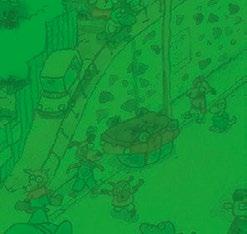



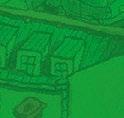








































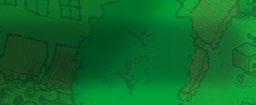




































taksitampere.fi facebook.com/taksitampere Tampere • Pirkkala • Kangasala • Lempäälä • Nokia • Ylöjärvi YOUR LOCAL TAXI SERVICE
Ellivuori Ski & Resort
Herra Hakkaraisen talo Mr Clutterbuck ’s house
Pukstaavi Museum for Finnish Book
Tyrvään Pappila Tyrvää Parsonage
t forget our precious summer Sastamala Gregoriana - Early music festival St. Olav Church • Nature and lakes www.visitsastamala.fi/eng/info ’t Sastamala round the year 8
Ritajärvi Nature Resort
ARE YOU HIDING YOUR BRAND?

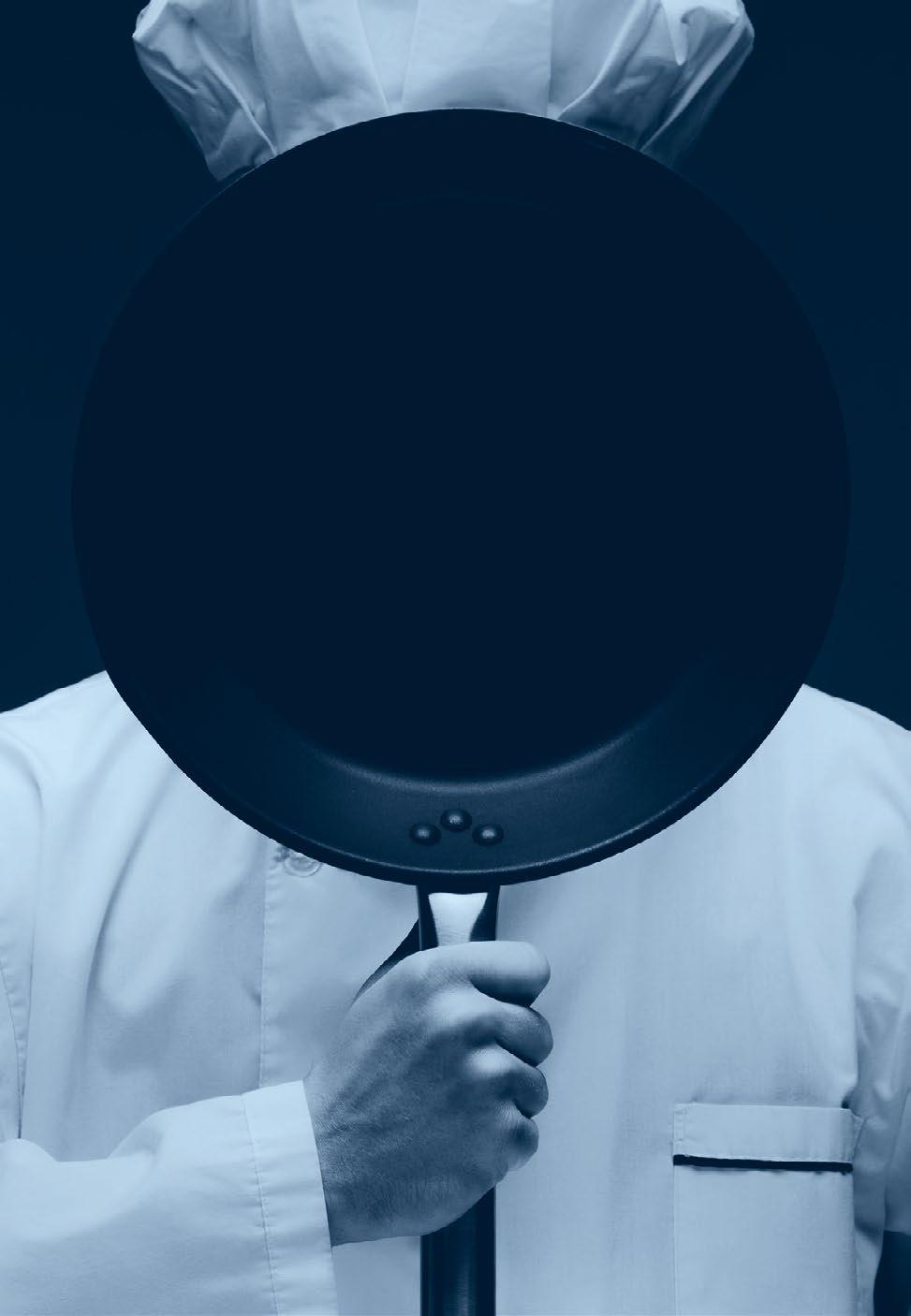
We create functional identities and unforgettable brands. So stop hiding and let’s level up your image!


The future of live music in Tampere
G Livelab offers a new kind of live music experience built on quality programming, state of the art audio facilities and modern design. At G Livelab you’ll experience performances by top artists of all music genres from Finland and abroad.

G Livelab Tampere has won the award for the best concert hall in the world (*Mondo*DR 2020) and the best live music venue in Finland (*Industry Awards 2020 & 2021).
Come and visit our world-class venue during your stay in Tampere!
Find out more: glivelab.fi/tampere
Puutarhakatu 1,
Tampere
G Livelab Tampere
© Laura Vanzo / Visit Tampere
www.knok.fi Lovely shop with Tampere souvenirs, Finnish design, handicrafts and clothes Taito Shop Tampere Hatanpään valtatie 4, tel. +358 50 598 4367 Mon–Fri 10–18, Sat 10–16 SHOP 10 9
A brief introduction to Finnishness
Geography and People
1. Language
The Finnish language is very difficult, so much so that Finns themselves even avoid using it, which is why Finns often prefer to speak through their actions.
The Finnish language is actually very ergonomic. You can just slap as many suffixes as you want on the end of a word, such as in, paikka/nsa/ pitä/mättö/myy/dessä/nsä/kö/hän/kään ([not] in their incorrectness either). There’s also pretty much no end to making compounds: lentokonesuihkuturbiinimoottoriapumekaanikkoaliupseerioppilas (Airplane jet turbine motor assistant mechanic non-commissioned officer trainee).

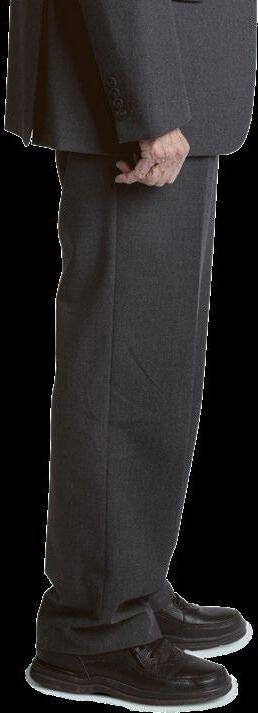
It should also be mentioned that Finns find it funny when Germans put verb clusters at the end of subordinate clauses.
2. Seasons
There are five seasons in Finland. Summer is short, bright and breathtaking, autumn is colorful and crisp. Winter is long, cold and beautiful. Spring is wonderful because winter is finally over. The fifth season is the second winter, which always arrives just when you think the damn winter is over.
3. Tribes
Several very different tribes live in Finland. When traveling in Finland, it’s a good idea to take into account at least the following factors about the way these tribes behave:
The East is home to talkative and emotional people who are usually crying when they aren’t laughing. These are the Karelians. To the west of Karelians live the Savonians, who consider themselves folksy but not everyone appreciates the subtlety of their wit.
Going even further west, you find the Häme people, whom we won’t mention further because they don’t like to call too much attention to themselves. Conversely, on the West Coast people are even quieter than normal, which is good because the few words they say are usually rude.

Ostrobothnians place their trust in two higher powers, themselves and God, especially the former. Finns in the middle of the country do not have any special characteristics other than that everyone owns their own lake. The north is home to people who live 150 kilometers from the nearest convenience store and 140 from a mailbox, which has made them quite broad-minded.
There is also a minority of Swedish-speaking Finns, who differ from others in that they are beautiful, rich, healthy and live on the coast.
4. Character

Every nation has certain hardened perceptions of its character, which often spread to neighboring countries too. For example, Finns are supposedly taciturn, honest, hardworking, trustworthy, humble, inventive, violent, drunk, shy, frumpy and persistent.
All of these are true.
But Finns are also talkative, cosmopolitan, educated, lazy, dishonest, affectionate, teetotalers, beautiful, outdoorsy, urban, gay, heterosexual, dour, xenophobic and very tolerant.
Central to the nature of Finns are pessimism and self-flagellation. For example, the people who succeed in Finnish politics are those who know how to paint the darkest and ugliest future. People typically succeed in politics by promising that everything will go to hell if they’re not elected.
Written by rOOpe lipasti translated by alex ahlgren & OWen F. WitesMan
There is usually some truth to stereotypes and clichés, so they can be enlightening when you want to get to know Finland and Finnishness. So here we go: How to understand Finns?
photo S e nv A to 14
1. Restaurants
In Finland, it is important not to be a bother. You see this especially in restaurant culture: Waiters often aren’t particularly friendly, if there even is one. Many times you have to pick up your drinks and even your food from the counter yourself. We don’t tip since it’s usually equated with giving alms.
Above all, in restaurants it is important to eat quietly and without complaining, no matter how bad the food. When the server asks if you like your meal, you’re supposed to nod and smile and say that you just ate at home, which is why you didn’t finish your plate.
2. Personal space
Personal space is important for Finns. This may be due to the fact that the country’s size is 338,424 square kilometers, which means that each Finn (5.5 million people) could have 61 hectares to themselves.
Being in close quarters with others is a vexing experience for Finns. A good conversational distance is two meters, which is coincidentally the same as what was recommended during the coronavirus pandemic. Any more distant and you have to raise your voice (bad) and any less and you might make physical contact (even worse).
3. Queuing
There are many unwritten rules for standing in line, and we follow them strictly. Don’t stand too close to the person in front of or behind you. An acceptable distance would be just far enough so the queue doesn’t look like a queue. This results in each person’s place in line being constantly open to question. Therefore, you have to glare at others to make sure they don’t cut. Also, to make sure you don’t cut ahead yourself. This makes queuing quite laborious.
There is also no talking in line. Not to the cashier, but especially not to the other customers. If someone speaks, we act like we don’t hear them. Money should be retrieved well in advance: The cash register is not the place to be digging out and counting coins or selecting which credit card to use. You have to think of others. No one wants to be standing in line any longer than they have to.
4. At the store
Haggling is not at all customary in Finland. It’s embarrassing for Finns. It gives the impression that someone can’t afford what they’re buying or the seller is trying to swindle the customer. This simply doesn’t happen in Finland.
In Finnish society, you can’t charge someone anything less than what is on the price tag because then there wouldn’t be the right amount of money in the register at the end of the day. The cash register has to balance perfectly. That is what Finnishness is all about.
But we’re still frugal in Finland: we could drive 500 kilometers in search of cheaper gasoline.
5. Dating
When a Finn is head over heels in love, they ask the object of their love out for coffee. Either one can take the initiative. At the café, each pays for their own food and drinks. No one brings flowers or other gifts. We just drink filtered coffee and think anxiously about what to say next. Men look at their hands. Women then also look at the man’s hands. For this reason, it’s a good idea to keep your hands clean.
If one of the people is a foreigner, a good topic for conversation is Finland and Finnishness. The point of saunas should not be questioned, however.
Topics of national pride
1. The maternity package
In addition to the Winter War, one of the things Finland takes the greatest pride in is when the state gives each newborn baby a cardboard box full of baby items. It’s an ingenious way to save on the expense of a bed, since the baby can sleep in the cardboard box. Buying an actual bed would be stupid, since babies rarely seem to sleep, especially at night. Condoms have also been wisely added to the maternity package so that the state can save on the cost of future maternity packages.
Maternity packages are also an export product. In one audacious attempt at international marketing, a maternity package was sent to the English royals, who hadn’t previously thought of sleeping in cardboard boxes. The maternity package has been available to all mothers since 1949.
2. Sisu
In their own minds, Finns are the most tenacious nation in the world. We still remind people that Finland was the only country in the world to pay back its war reparations and Marshall Plan aid, thus earning its reputation as the “Country that paid its debts”.
Finns do not want to be indebted to anyone in their private lives either. It causes them anxiety if a friend offers them a glass of beer, which is why the warmest friendships arise between those who never give each other anything.
3. Reliability
Finns are the most reliable people in the world. This is evident in many areas, not least in large-scale industry. If you order a ship from the Finns, it arrives as agreed and on time. In Finland, schedules and sticking to them are valued perhaps more than anything else. The construction industry, rail transport and public procurement are, of course, exceptions to this.
You cannot offend a Finn worse than by arriving late to an appointment without a valid reason. These include death and dying.
4. Obedience
Finns love rules. They also love to hate rules, but everyone obeys them all the same. This is reflected not only in strange laws (a 15-year-old can obtain a license to buy a shotgun but cannot buy sparklers), but also in the fact that in 2018 there were about 140,000 nonprofit organizations in Finland.
For Finns, it’s always preferable to handle things rigidly, bureaucratically and in accordance with rules. For many, serving as the president, treasurer, or the like of a nonprofit organization is an honor and a sign that they are respected members of society with a reasonable but not excessive amount of influence.
5. Equality
Finland is one of the most equal countries in the world. Women were given the right to vote in 1906, and they have been able to participate in working life just like men since the end of the world wars at the latest. Women actually work even more than men, since they also do most of the housework (about 60 %). Women are also the majority of university students in Finland.
Of course, there is still room for improvement. At public events, the queues for women’s restrooms are an ongoing problem because the number of toilets is always calculated incorrectly. s
Customs
15
11 12


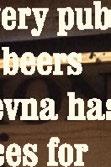








BREWERY DISTILLERY BAR 13













THE BEST BREWERY AND DISTILLERY RESTAURANT IN TOWN TEERENPELI TAMPERE - HAMEENKATU 25 - WWW.TEERENPELI.COM
Varaa pöytä / Reservations: ravintolatampella.fi
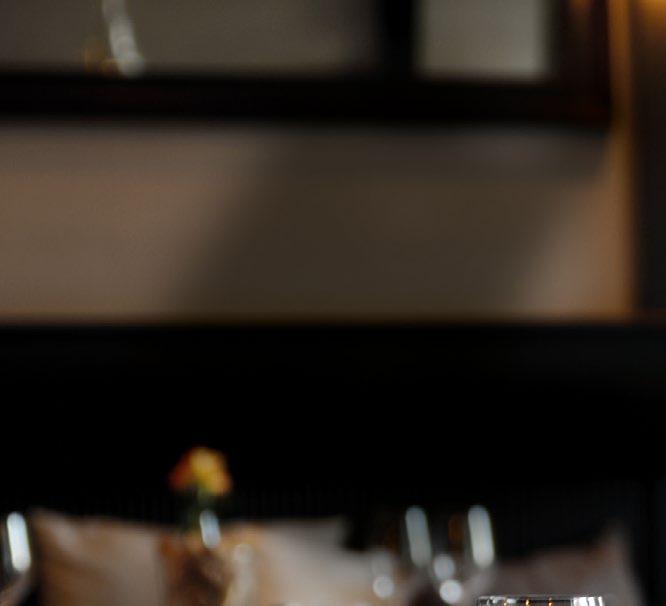




Opening hours: Wed–Thu 16–23
Fri–Sat 16–24


Last orders by 22.00 o'clock

15 14
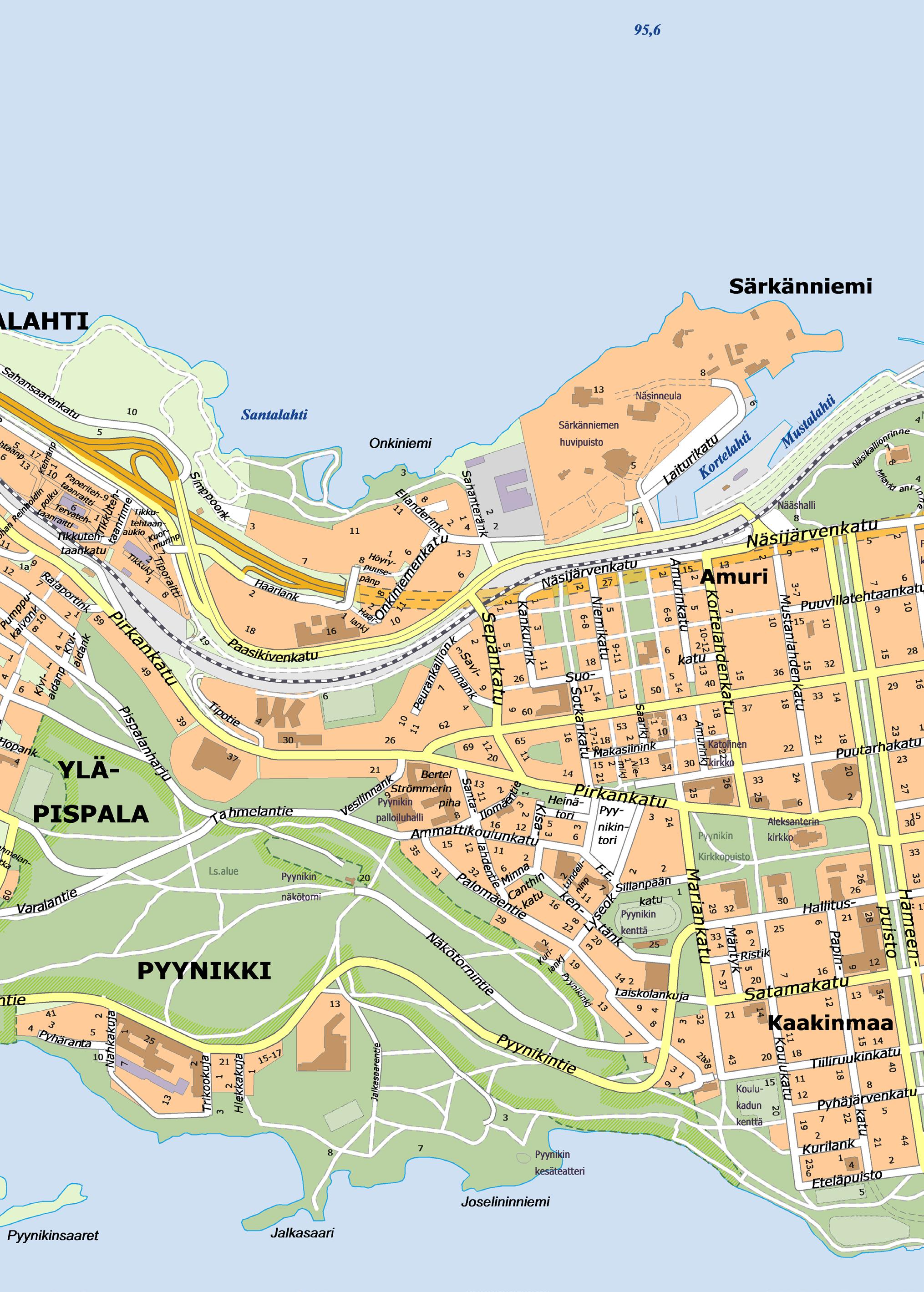
Tampere A MAP IN YOUR POCKET Download the free Tampere Times Map App www.tamperetimes.fi © City of Tampere Norway Sweden Germany Poland Russia Finland YOU ARE HERE! Hotels providing Tampere Times are marked on the map with numbered blue dots. The list of hotels can be found on page 20. 24 4 12 11 20 8 23 18
ADVERTISERS ARE MARKED ON THE MAP WITH GREEN DOTS.
PLEASE LEAVE THIS MAGAZINE FOR THE NEXT GUEST – THANK YOU!

7 2 28* 19 22 31 12 2 21 13 26 3 14 5 6 8 15 9 10 13 16 17 18 3 28* 28* 1 3 3 5 33 32 16 11 30 29 4 9 10 14 15 17 25 34 35 19
Times is available in these high standard hotels & hostels
01 couRtyARd by mARRiott
tAmpeRe city hotel
Yliopistonkatu 57, 33100 Tampere Tel. +358 29 357 5700 www.marriott.com
02 dReAm hoStel tAmpeRe Åkerlundinkatu 2, 33100 Tampere Tel. +358 45 236 0517 www.dreamhostel.fi
03 foRenom ApARthotel
tAmpeRe city
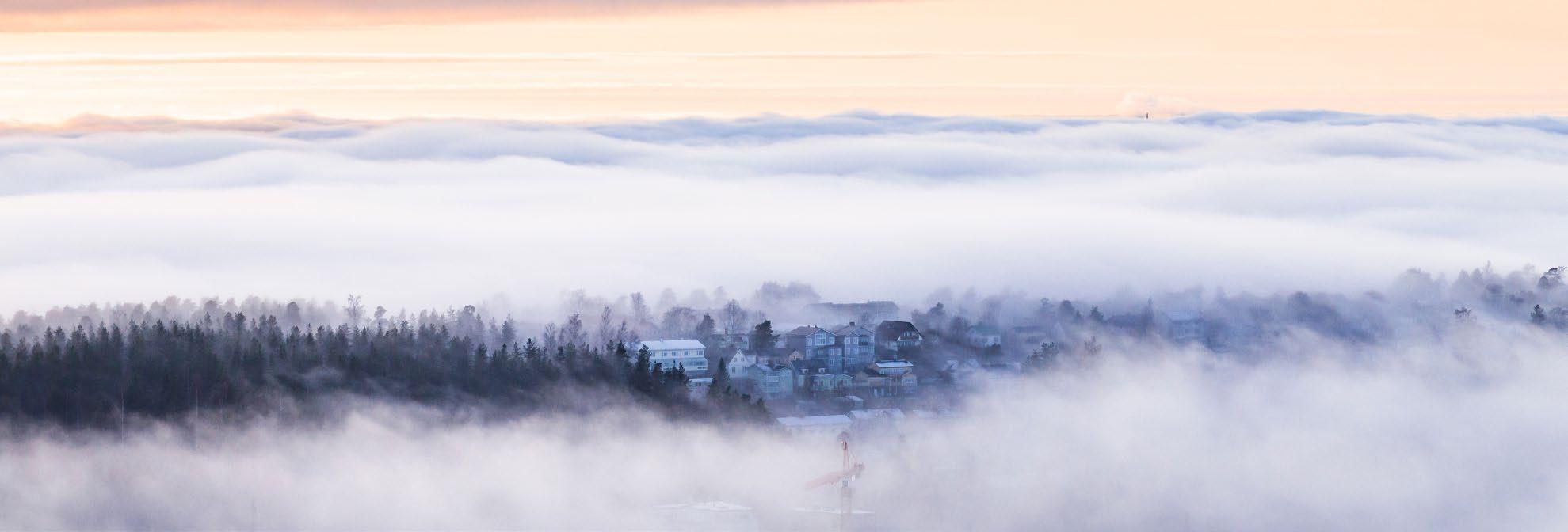
Hämeenkatu 28, 33200 Tampere Tel. +358 20 198 3420 www.forenom.fi
04 foRenom tAmpeRe city SuiteS Puutarhakatu 37 A, 33230 Tampere Tel. +358 20 198 3420 www.forenom.fi
05 hotel homelAnd
Kullervonkatu 19, 33500 Tampere Tel. +358 3 3126 0200 www.homeland.fi
06 hotel KAuppi
Kalevan puistotie 2, 33500 Tampere Tel. +358 3 253 5353 www.hotelli-kauppi.fi
07 lAplAnd hotel tAmpeRe Yliopistonkatu 44, 33100 Tampere Tel. + 358 3 383 0000 www.laplandhotels.com
08 oRiginAl SoKoS hotel ilveS (Hotel is closed during renovations. The work is estimated to be completed and hotel to re-open in December 2021.)
Hatanpään valtatie 1, 33100 Tampere Tel. +358 20 123 4631 www.sokoshotels.fi
09 oRiginAl SoKoS hotel villA Sumeliuksenkatu 14, 33100 Tampere Tel. +358 20 123 4633 www.sokoshotels.fi
10 RAdiSSon blu gRAnd hotel tAmmeR Satakunnankatu 13, 33100 Tampere Tel. +358 20 123 4632 www.radissonblu.com
11 ScAndic eden noKiA Paratiisikatu 2, 37120 Nokia Tel. +358 3 4108 1627 www.scandichotels.fi
12 ScAndic RoSendAhl Pyynikintie 13, 33230 Tampere Tel +358 3 244 1111 www.scandichotels.fi
13 ScAndic tAmpeRe city Hämeenkatu 1, 33100 Tampere Tel. + 358 3 244 6111
www.scandichotels.fi
14 ScAndic tAmpeRe hämeenpuiSto Hämeenpuisto 47, 33200 Tampere
Tel. +358 3 4108 1628
www.scandichotels.fi
15 ScAndic tAmpeRe KoSKipuiSto Koskikatu 5, 33100 Tampere Tel. +358 3 4108 1626
www.scandichotels.fi
16 ScAndic tAmpeRe StAtion Ratapihankatu 37, 33100 Tampere
Tel +358 3 339 8000
www.scandichotels.fi
17 Solo SoKoS hotel toRni tAmpeRe Ratapihankatu 43, 33100 Tampere +358 20 123 4634
www.sokoshotels.fi
18 SpA hotel holidAy club tAmpeReen Kylpylä
Lapinniemenranta 12, 33180 Tampere
Tel. +358 30 687 0000
www.holidayclub.fi
Tampere
photo: lA u RA vA nzo / v i S it tA mpe R e 20

16




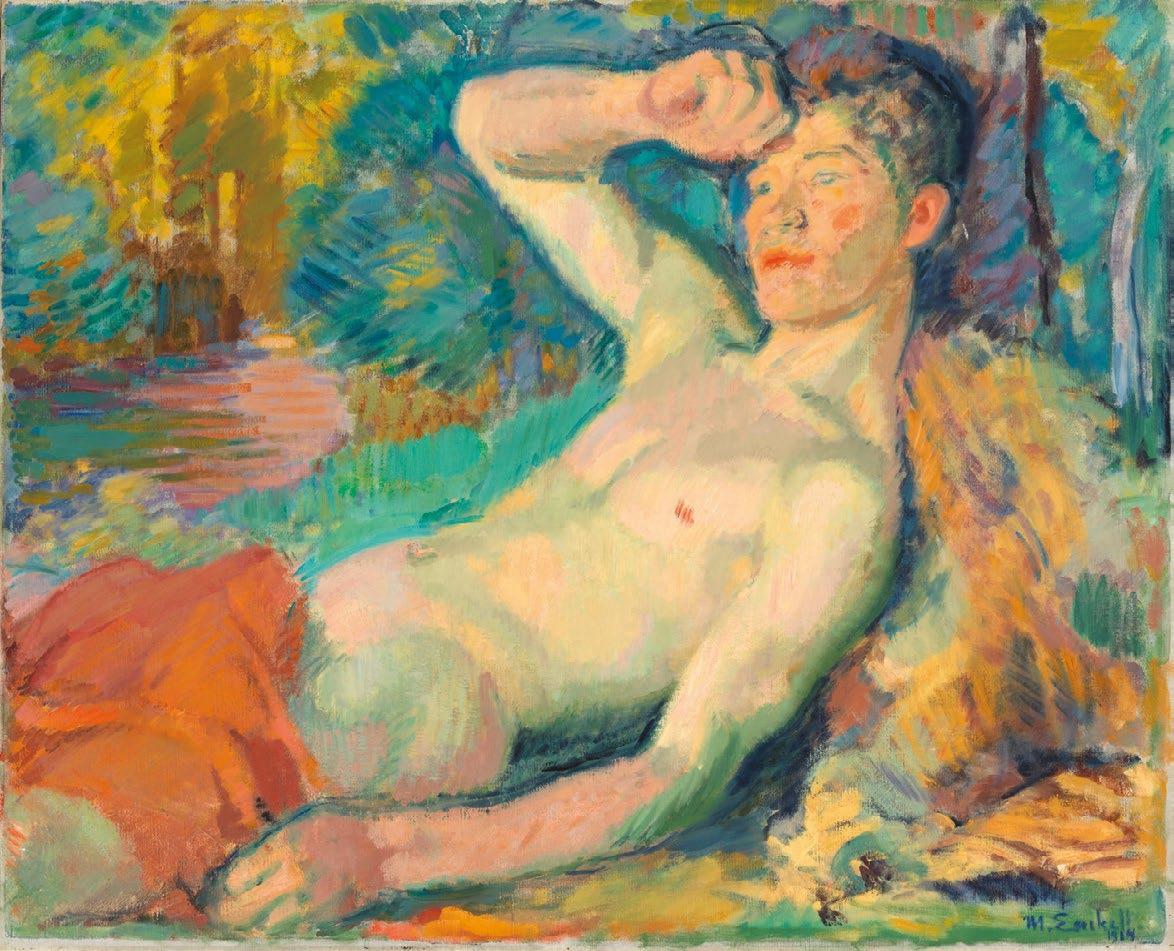

MOOMIN MUSEUM TAMPERE HALL muumimuseo.fi/en YLIOPISTONKATU 55, 33100 TAMPERE, FINLAND Joy Everyday 16.10.2021–24.4.2022 ALAVERSTAANRAITTI 5, TAMPERE TEL. +358 3 5656 6966 | 14/7¤ OPEN TUES–SUN 10–18 VAPRIIKKI.FI/EN Over ten exhibitions, restaurant and museum shop - Vapriikki is a museum that offers a complete service! WELCOME TO VAPRIIKKI! MUSEUM CLOSED 13th DECEMBER – 10th FEBRUARY HÄLLÄ stage | HÄMEENKATU 25 | 33200 TAMPERE WWW.TANSSITEATTERIMD.FI Contemporary dance for all ages photo HARRI HINKKA Magnus Enckell, Awakening Faun, [det.], 1914. Finnish National Gallery, Ateneum Art Museum, Hoving Collection. Photo: Finnish National Gallery/ Jenni Nurminen. The exhibition has been produced by the Ateneum Art Museum / The National Gallery. Puutarhakatu 34, 33230 Tampere | www.tampereentaidemuseo.fi 17 19 20 21 TIMES-LEHDET TAVOITTAVAT 3 MILJ. HOTELLIYÖPYJÄÄ VUODESSA Metropolitan Times | Tampere Times | Turku Times | Oulu Times Varmista näkyvyytesi | Puh. 045 656 7216
Art crime and police work

The Police Museum's exhibitions show police work of past and present, as well as extraordinary artworks from Picasso, Repin and Gallen-Kallela. Extraordinary, since they all are forgeries.
Written by tiina tuulasvaara-kaleva, ChieF intendant
The Police Museum opened in 2008, presenting for the first time the history of the Finnish police to the public. Police work has changed along with society as a whole, and the exhibition therefore presents the history of the police in the context of major trends in Finnish history.
The new permanent exhibition was opened in 2019. It is innovative and versatile, utilises state-of-the-art technology and is based on recent research on the topics presented. Numerous objects, photographs and films from the collections of the museum are on display, telling the story of how police work has changed throughout history and across the country. From crime scenes to road accidents and rural areas to growing cities,
exhibition illustrates the various aspects of policing.
the
photo: p olice m u S eum, J ARKK o Jä R vinen 23
Ferdinand Von Wright (1822–1906) was a Finnish painter best known for his landscapes and animal paintings. Every Finn knows his painting Fighting Capercaillies through school books and other reproductions. Perhaps inspired by this, the forger developed an entirely new piece of art, Fighting Black Grouses, which he claimed to be a painting previously unknown in Finland as it had been sold to Sweden by von Wright. In 2007, an art collector bought it for 100,000 euros.
The exhibition begins with the Swedish era in Finnish history, featuring witch hunts, sheriffs and an executioner’s axe. As Finland eventually became part of the Russian Empire, the country’s first police department was established in Turku. The exhibition concludes with the refugee crisis of 2015, during which the police registered asylum seekers at a reception centre in Tornio by the Swedish border. The police also established a presence on social media.
Police equipment from swords to electroshock weapons, wagons to cars and sleds to motorcycles are on display. Criminals have also changed their methods, from obtaining valuables by blowing up safes to committing identity thefts online.
At the exhibition, the “Alley of Tears” explores social problems such as prostitution, but also how women first entered the male-dominated police force as officers of vice squads. By the “Prohibition Barrel” you can learn about the business of illegal alcohol in the 1920s and 1930s and how Prohibition was viewed by the police and the public.
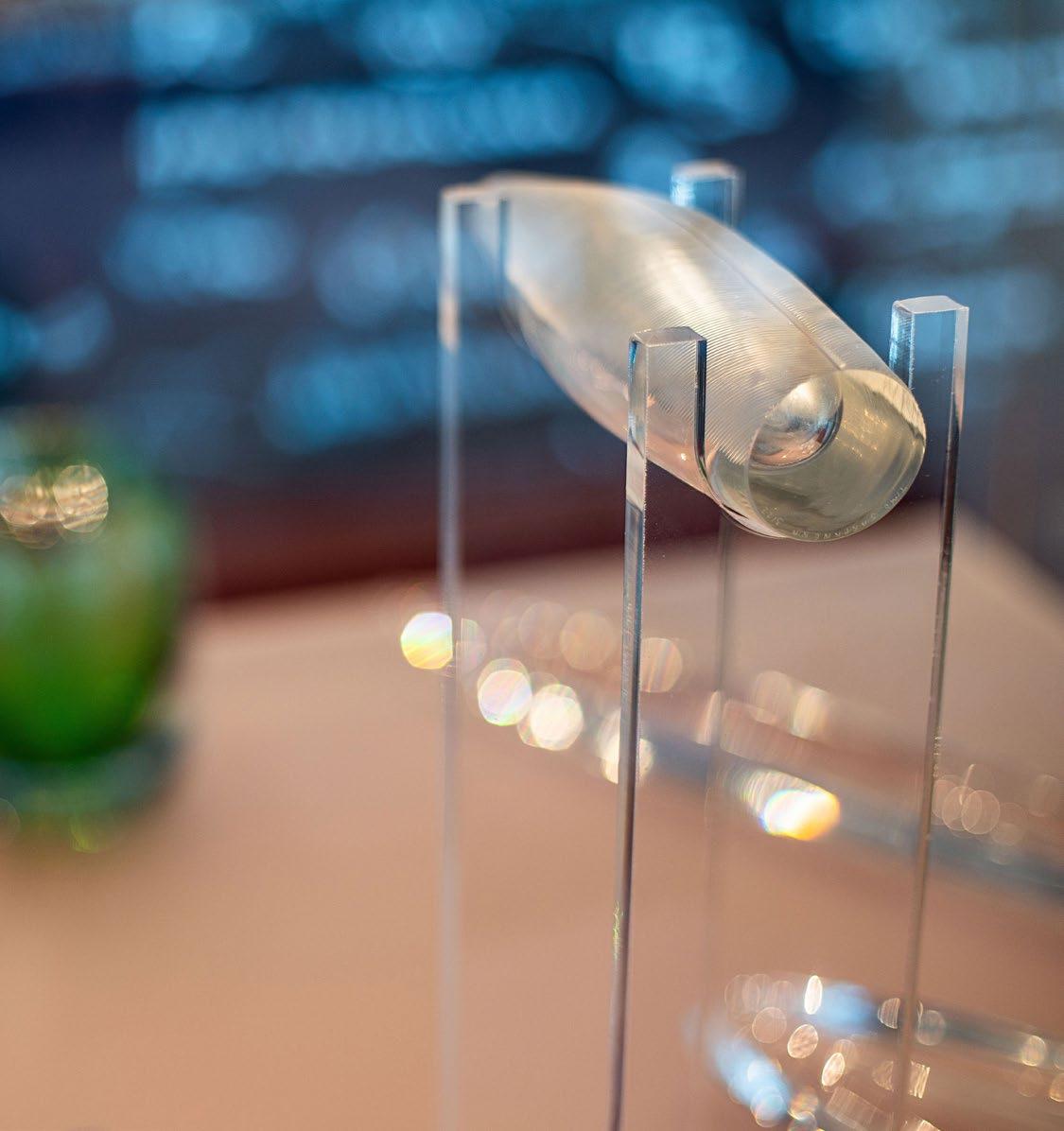
Evidence from notorious cases of homicide, including the Lake Bodom and Tulilahti murders, has also been put on display. These items are from the collections of the Crime Museum, a subsidiary of the Police Museum, the main exhibition of which is located within the headquarters of the National Bureau of Investigation in Vantaa, and is not open to the general public.
The coloured truth of art forgeries

New temporary exhibitions open every two years. Opened in the spring of 2021, The coloured truth – Art crime in Finland tells the story of Operation Fake, the investigation of one of the largest series of art forgery crimes in Europe. The exhibition presents the history of art crimes, how art forgers and fraudulent art dealers work, and how
THE EXHIBITION CONTAINS 280 ART FORGERIES, MANY OF WHICH WERE CLAIMED TO BE PAINTINGS BY PROMINENT ARTISTS OF THE GOLDEN AGE OF FINNISH ART.
the National Bureau of Investigation investigated these crimes in collaboration with the Finnish National Gallery.
Dealing in art forgeries is motivated by a desire for considerable profits. This business is associated with aggravated fraud, money laundering, embezzlement and other forms of organised crime. When suspected forgeries have been seized by the police, conservators and material scientists of the Finnish National Gallery determine whether the items are indeed forgeries. The police are, in turn, responsible for finding out whether the art dealer was aware of the true nature of the items he or she was selling.
The National Bureau of Investigation identified 24 fraudulent art dealers who had deceived more than 40 buyers, making a total profit of 20 million euros. The exhibition contains 280 art forgeries, many of which were claimed to be paintings by prominent artists of the Golden Age of Finnish Art (1880–1910), including Akseli Gallen-Kallela and Helene Schjerfbeck
Some of the forgeries were marketed as works of internationally renowned artists such as Ivan Aivazovsky , Ilya Repin , Pablo Picasso and Fernand Léger. As the market for art forgeries is based on what is currently popular and can be sold at a high price, the works on display illustrate the taste of contemporary collectors. Upon having been discovered by the police, the forgeries were seized by the state as tools of crime and were subsequently obtained by the Police Museum.
photo: p olice m u S eum, J ARKK o Jä R vinen photo: p olice m u S eum, J ARKK o Jä R vinen
When the police searched a forger’s home, this forged painting was still on the easel.
Glass art forgeries based on Finnish designs.
24
An interactive concept
The main exhibition includes Pokela, a police station for children where young visitors can try on police coverall and learn about police work through play, comics and animations. There is also a cinema room where visitors can watch clips from old police films.

Sit in a police van, put on virtual reality goggles and see how many traffic offences you can spot while patrolling! You can also investigate a burglary in a simulation room that utilises augmented reality.
There is a wall with police equipment that can be touched by visitors, including field coveralls, a bulletproof vest, a truncheon and a helmet. For the visually impaired, the texts of this section are also available in braille.
The museum provides an interactive learning environment for the public as well as students of the Police University College. For example, students utilise the museum when learning crime scene photography.
Online exhibitions

A virtual tour of the main exhibition is available on the Police Museum website. There are also several online exhibitions, including From breeches to coveralls – The history of Finnish police uniforms and The police of independent Finland. This autumn’s exhibition Crime and love will present the history of legislation regarding homosexuality and how police work has been influenced by changes in legislation and public attitudes toward sexual and gender minorities.
The Police Museum maintains an active presence on social media and invites you to follow them on Facebook, Twitter, Instagram and YouTube to get information on what is taking place in the museum's exhibitions and collections!
The museum's YouTube channel has many videos, including interviews with investigators of art crimes and the time travel adventure of Antti Lieroinen, the last person in Finnish history to have been burned at the stake for witchcraft. In this series, Antti takes a tour of the museum, reflecting upon how policing has evolved over the centuries. s
A free museum for the entire family
The Police Museum is located adjacent to the Police University College in the Tampere suburb of Hervanta. Admission is free, and the museum has something to offer visitors of all ages and backgrounds. Over time, the museum has become one of the many popular attractions of Tampere.
The museum is open all year round and is fully accessible by wheelchair. Exhibition texts and audio guides are available in Finnish, Swedish and English.
In addition to providing interesting historical perspectives, the museum hopes to foster communication between the police and the public they serve, thereby contributing to public order and safety.
VISIT THE MUSEUM BY TRAM, BUS OR CAR
The Police Museum is located on Vaajakatu 2, beside the Police University College. The museum can be conveniently reached from the city centre of Tampere by public transportation. The museum is a five-minute walk from the tram stop Opiskelija B, which can be reached by Tram Line 3 in 20 minutes. Buses 5, 6, 13 and 19 also stop nearby. The parking lot in front of the museum allows 2 hours of free parking.
Covid-19 restrictions may vary during the season and there may occasionally be a limit on how many visitors can be admitted at a time. To find out whether it is necessary to announce your visit in advance, please visit our website Poliisimuseo.fi/en or call our front desk (029 5418 325). Opening hours are Tuesday to Friday 10 am–3 pm and Saturday 12–5 pm.
SEE ON MAP (PAGE 19)
photo: p olice m u S eum, J ARKK o Jä R vinen
The coloured truth -exhibition. Nothing is quite what it seems at first glance.
p hoto: p olice m u S eum, Reett A l epi S tö
25
Playing at Pokela, the children’s police station.
EMIL AALTONEN MUSEUM

Spies and their equipment that changed the world

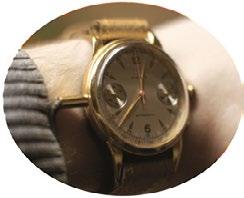
The world’s first spy museum in the city center introduces you to the fascinating ways and means of real life James Bonds. Eavesdropping, hidden cameras, secret weapons, code breaking, e-mail hacking...

Remember to say the code
to get free Agent Test!

Mariankatu 40, Tampere
Emil Aaltonen museum of industry and art. The permanent collection represents Aaltonen´s life and displays some of his art collection. The exhibited artists are masters of older Finnish painting.
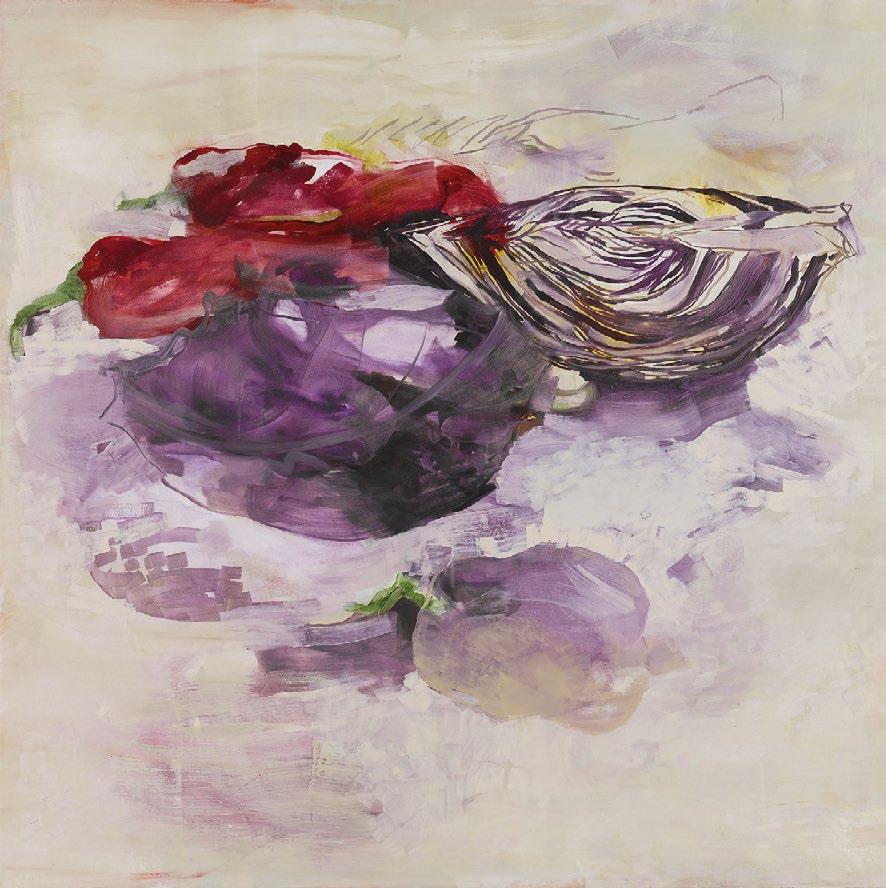
Temporary exhibition: Nanso 100 years Admission

Museum is open Mon-Sun 12-18

Satakunnankatu 18, Finlayson
Admission 9€ / 6€ Agent Test 5€ www.vakoilumuseo.fi



3€ / 2€ 1.6.–31.8. wed 12am-6pm, thu, sat, sun 12am–4pm 1.9.–31.5. wed 12am–4pm, sat, sun 12am–4pm www.pyynikinlinna.fi - Tel +358 (0)3 212 4551
“We met at the hotel”
22 24 23
Translation books in 10 languages!
LAIKKU Culture House
Located in the heart of Tampere, Culture House



Laikku is home for art and culture. Come enjoy art exhibitions and events that are arranged almost daily. Café Laikku serves tasty lunch and sweet and savory delicacies.





ADDRESS:
















CULTURE HOUSE LAIKKU Tue-Fri 9 AM–9 PM Sat-Sun 10 AM–6 PM Mon Closed CAFÉ LAIKKU Tue-Fri 10 AM–7 PM Sat-Sun 10 AM–4 PM Mon Closed www.laikku.fi
Keskustori 4
HOURS:
OPENING
MÄNTTÄ | SERLACHIUS.FI | +358 (0)3 488 6800 | CULINARY PLEASURES – RAVINTOLAGOSTA.FI ART
ARCHITECTURE | HISTORY
CUISINE IC-98 until 6 Mar 2022 ART ODYSSEY 2021 from 6 Nov 2021 Artwork information: Kimmo Schroderus, Lab Experiment #1, 2020 | IC-98, Lands of Treasure, still photo of video, 2021 | Helene Schjerfbeck, The Red-Haired Girl II, 1915 Clare Woods, Mrs Explain Things, detail, 2021 | Trish Morrissey, One woman. 1943, 2015. CLARE WOODS from 26 Mar 2022 CLASSIC WORKS OF FINE ART AT THE MANOR TRISH MORRISSEY from 5 Feb 2022 DEPARTURE FROM TAMPERE Tampere bus station 10.50 am Tampere railway station 11.05 am ARRIVAL IN MÄNTTÄ Serlachius Museum Gösta 12.25 pm Serlachius Museum Gustaf 12.35 pm DEPARTURE FROM MÄNTTÄ Serlachius Museum Gösta 5.20 pm Serlachius Museum Gustaf 5.30 pm ARRIVAL IN TAMPERE Tampere railway station 6.45 pm Tampere bus station 6.50 pm JUMP ON THE SERLACHIUS SHUTTLE BUS! 25 26
|
|
Tampere in a nutshell
Written by rOOpe lipasti translated by OWen F. WitesMan
8000 BC
The connection to ocean from the Tampere region was cut when the ice age was finally over. As the ice melted, the land rose up and the lakes were born – also Näsijärvi and Pyhäjärvi, and little later the Tampere Rapids. A must see attraction from the ice age is Pyynikki, a 90 hectare ridge area, which is almost in the centre of the city. From here there are marvellous views to lake Pyhäjärvi. It is also a beautiful place for other outdoor activities.
600
Tampere was an ideal place to build a village, because there were good waterways to both north and south. The first signs of permanent living in the area are from the 7th century.
1200
By the 13th century Tampere region had grown, and it was an important market place. It was inhabited by the Pirkka tribe and even today the Tampere province is called Pirkanmaa, “The land of the Pirkka”.
1638
Tampere was not yet an actual city, but in 1638 Finland’s governor Per Brahe ordered two yearly fairs to be held at the the Tampere Rapids. That’s why Turku – the then capital of Finland – and Tampere have got a special connections of fates, for when the whole city of Turku burned in 1827, the damage was so severe partly because all the men from Turku happened to be at the Tampere fair.
1779
The King Gustav III of Sweden finally granted Tampere the full township status. And no wonder, because Tampere was huge: 3.2 square kilometres with population of no less than 200!
1824
The beautiful old church of Tampere was built. The architect was Charles Bassi
1820
A Scotsman called James Finlayson set up a cotton factory near the Tampere Rapids. It was the first but not last major factory in the remarkable industrial history of Tampere. Finlayson still is a brand every Finn knows. Also from that time on, the use of waterpower from Tampere Rapids became important.
1840
From the 1840’s Tampere became the most industrialised city in Finland. Soon there were factories that made iron, paper, machinery, clothes, shoes and many other things. Even to this day Tampere is sometimes called “Manse”, which comes from the saying that Tampere is the Manchester of Finland.
1901
Tampere is also a vibrant theatre city. The first one, Tampereen Työväen Teatteri – The Tampere Workers Theatre – was established 1901. In 2020 there are over 10 professional theatres in the area.
1918
In 1918 Finland was torn by a civil war with two sides: the “reds” and the “whites”. As a working class city, Tampere sided with the reds (who lost). Tampere saw severe battles, thousands died in war efforts and even more in prison camps.
1939–1945
Finland was in war against Russia, and Tampere was an important centre of war industry. For example Tampella made mortars and cannons. Tampere was also bombed, but luckily there was little damage.
1971
Näsinneula, the high tower that Tampere is famous for, was built. Few years later The Särkänniemi Amusement Park opened its doors.
1990
During the 90’s the heavy industry of Tampere was in trouble. One reason was the collapse of Soviet Union, but all and all the world was changing. The chimneys were no longer active, and the factories shut down. Nowadays they are renovated for apartments, museums and such. Industry in today’s Tampere in mostly high tech.
2021
Tampere is the third biggest city in Finland, with over 235,000 inhabitants in the city region. It has four universities and a very vivid cultural life. Tampere is also a city of vision and courage: the brand new tramway is a good example of that! s

photo: lA u RA vA nzo / v i S it tA mpe R e
28
All about public transport in Tampere: nysse.fi

Discover Tampere region with buses and trams
Hop on
Tampere Regional Transport Nysse offers a good route network in Tampere and the surrounding cities.
Nysse's journey planner helps you plan your trip with real-time schedules from your door to your destination.
Trams and buses have common travel rules and Nysse’s whole service area uses the same tickets. You can travel by bus or tram and combine them according to your needs.
Go on nysse.fi/en and find the best way to travel in Tampere with Nysse buses and trams.
Tickets, routes and schedules: nysse.fi/en
Tickets
Download the Nysse Mobiili app and travel easy and cheap! The app is available from Google Play or the App Store. Just log in, add a payment card and buy a ticket for 90 minutes or 24 hours – even just before you get on a bus or a tram. With Nysse Mobiili you can also buy a ticket for another passenger if you are traveling together. 0–6 year olds do not need a ticket with an older passenger.
You can pay for your trips on Nysse buses and trams also with contactless payment using a debit or credit card or a mobile device.
Confirm your travel rights with a ticket reader device whenever you get on public transport, even during transfers.
More information about Tampere Tramway: tampereenratikka.fi/en
Hello darkness my old friend
Written by rOOpe lipasti translated by alex ahlgren & OWen F. WitesMan
Every Midsummer, in June, that is – just when summer is about to begin! – Finland celebrates the longest day of the year. The sun does not set at all, but instead shines all night (unless it hails; Finnish weather is unpredictable). However, time-honored Midsummer tradition requires that some killjoy has to say that winter will be here soon, since the days are getting shorter now.
And it’s true, though Southern Finland will still have to wait quite a while for the darkness to return. But by the end of September, you can really notice the days start to shorten: when you wake up in the morning, it’s dark, and the daylight doesn’t last long. October moves along, but by November it’s bad, with pouring rain, dead plants everywhere and thickening darkness. Finally by December, the sun only pops up to say a brief hello. Because it’s usually so cloudy, the days are just gray twilight.
To make matters worse, on 31.10. we move the clocks back an hour to what we’ve given the Orwellian name, “normal time.” This way you can maximize the possibility that no one will see daylight for a few months.
Of couRSe, it’s even worse in the north: in Utsjoki, the sun sets in the middle of November and doesn’t rise again until it peeks from the sky for just a moment in mid-January. After living in pitch darkness for a few months, you start to understand what darkness really means. At least in the south, their cities are better lit. No wonder then that darkness-induced anxiety has its own medical term: Seasonal Affective Disorder (SAD). SAD has the same symptoms as regular depression, including sadness, anxiety, irritability, hopelessness and so on. Symptoms usually begin in October and lessen around February-March, when the sun starts to reappear. About one percent of Finns suffer from recurrent episodes of seasonal depression. In addition, 10–30 % of the population suffers from similar but milder symptoms. This isn’t called depression, but rather the “winter blues.” Symptoms usually get worse with age, which is why many Finnish retirees live in Spain during the winters.
And yet, in spite of it all, there is also something very calming about the darkness.

30
Some people are depressed by Finland’s long winters, but the darkness can also be enjoyable.
So now it’S time to list the good qualities of darkness. Enjoy!
1. You can see the stars better in the dark. And if you get lucky and there’s snow on the ground, the starry sky and white snow drifts are a beautiful sight to behold. One of the coolest things to do during the winter in Finland is to ski in the moonlight through the fields between islands of forest. Failing that, a walking path will do.
2. You can use candles to your heart’s content. What could be cozier than lighting some candles and curling up under a blanket to take a nap or read a book? Or curling up on the sofa to enjoy a glass of red wine while the rest of the world is cloaked in darkness? If you happen to own a fireplace, staring at the fire will multiply your enjoyment several times over.
3. Darkness provides peace of mind. Autumn strolls in the city, with only a little light gleaming from the streetlamps, provide the opportunity to be all by yourself and think deep thoughts. You can be anonymous, and no one will bother you. This also fits the Finnish mindset, although it’s unclear which is the reason and which is the result.
4. The aurora borealis. In the winter darkness, you can see the northern lights even in southern Finland, although they are more beautiful in the north. Aurora borealis is a light phenomenon of colorful, dancing patterns in the night sky. You can see more of them the closer you are to the earth’s poles. They are caused by solar wind particles hitting the earth’s atmosphere.
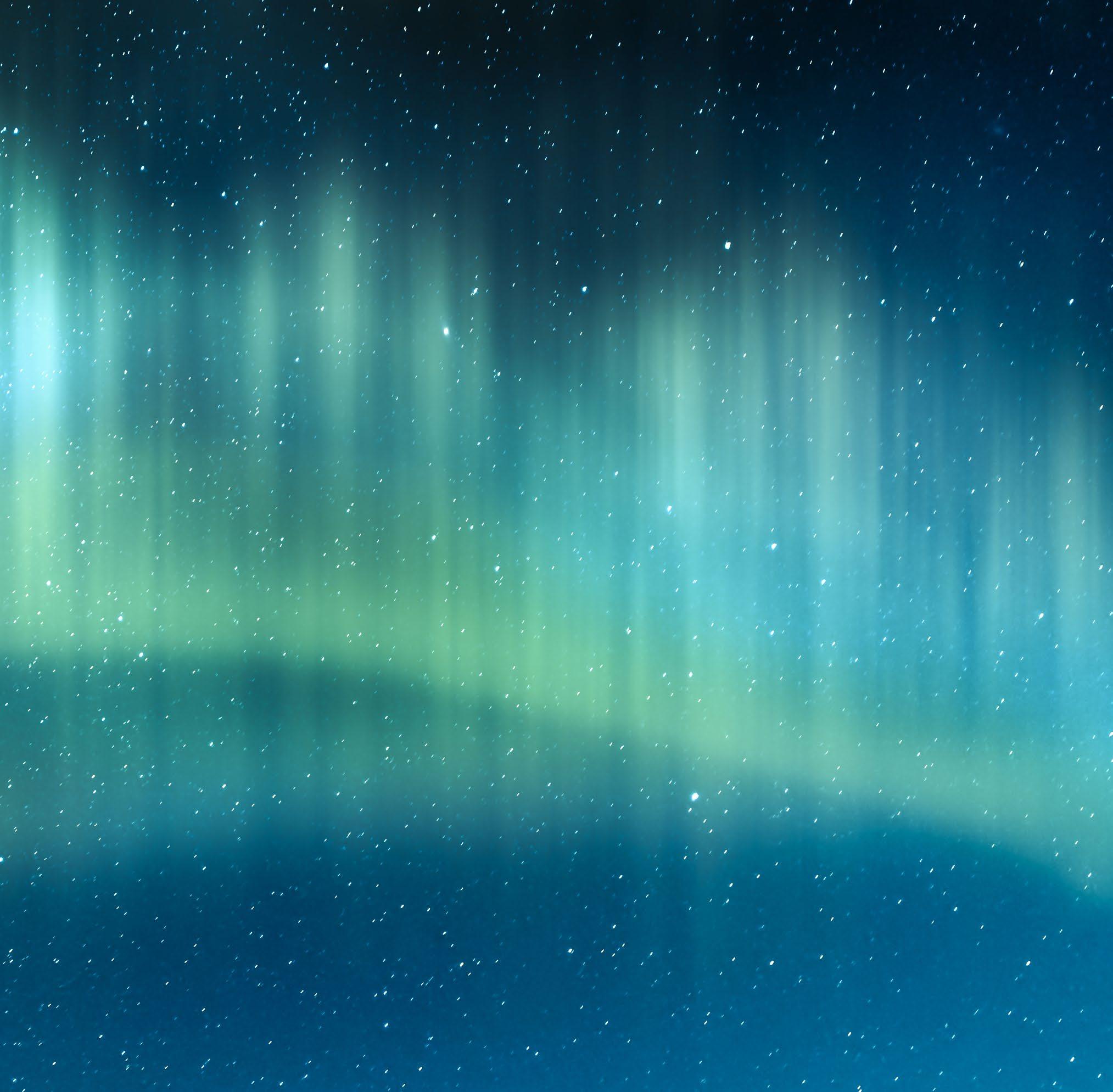
5. Winter sauna. Darkness usually also means coldness, so what better way to warm up than by taking a sauna? After the sauna, a stroll in the snow or a short swim will invigorate you, and then you can return to the dark steam room, a sort of natural womb. If you don’t have your own sauna, Finland is full of public saunas, where you can often also swim in a hole in the ice.
6. You can sleep better. If you have a hard time sleeping in the summer when the nights are bright, you won’t have any trouble in Finland during the winter. You can go to bed at three in the afternoon and sleep until ten in the morning in blissful twilight.
And that’s not all: during the winter, the secretion of the sleep hormone melatonin increases, which is why people are usually sleepier than in the summer. Thus you have a scientific reason to take naps several times a day!
7. In the dark, even a small ray of light is accentuated. Finland arranges different artistic light shows every year. For example, Lux Helsinki is held early in January each year, turning the whole city into a magnificent light show. Similar artistic light shows are also held in Turku, Tampere and Oulu.
8. Everyone’s mood drops, and we become irritable. Of course, it is unfortunate that darkness causes a decrease in the neurotransmitters serotonin and dopamine. Serotonin affects your mood and dopamine allows you to experience pleasure. However, this is the exact reason why you should let your hair down, throw a party, start a new hobby or take a small trip. This is why the Christmas party season in Finland lasts from October to December.
9. You’re always hungry. Darkness increases appetite and the desire for sweets. What a fabulous excuse! I usually don’t care for them, but I do when it’s so damn dark! As a bonus, people don’t see me gain weight in the dark.
10. You don’t feel like moving. Darkness lowers your mood and energy levels, which is easy to translate into a win: I’d love to run a marathon instead of watching Netflix right now, but it’s just so dark – what a pity. Luckily, the world has all sorts of sports that can be done in the winter and the dark. Night orienteering is one example, which you can also do during the day in the winter. The other is night jogging – though despite its honorable sounding name, in the Finnish language this refers to bar-hopping and sleeping around.
11. You have memory and concentration problems. Yeah, yeah! I know I promised I’d do that a week ago, but look at how dark it is, I just couldn’t. Would tomorrow be okay? How about next week? Let’s address this again in April at the latest! Is there an easier way to explain away your own laziness than six months of darkness? s
photo: e nv A to 31
Enjoy your stay!
Written by rOMan sChatz
So you spent the night here. Or you’re about to. Or both. Are you here for business or pleasure? Relaxing with your family? Relaxing without them?
Well, you’re absolutely right, that’s none of my business, and surely, you’ve already filled out your registration form at the reception desk.
I just want to remind you of the fact that you have entered the twilight zone, that you’re in a very special place. Hotels are much more than just a home away from home, they’re at the same time private and public spaces. Some people check in, because they don’t want to be seen together, others do it for exactly the opposite reason.
And while the bed, the breakfast, the friendly staff and the quality of the toilet paper are of course important, the most crucial thing about hotels is their magical potential.
EveRy once in a while, hotels are the setting for events of historical dimensions. Some of the world’s biggest deals – both legal and illegal – were made in a hotel: peace treaties were signed, empires founded and buried. Hotels have been the backdrop of many political, cultural and technological breakthroughs.
The very first telephone call in London was placed in 1877 from a hotel, and by none other than inventor Alexander Graham Bell himself. The Academy of Motion Picture Arts and Sciences was formed 1929 during a fete in a Los Angeles hotel. Rumor even has

TAMPERE TIMES COLUMN 32
it that the first sketch of the Oscar statue was sketched on a hotel napkin. In 1963, Dr. Martin Luther King wrote his famous speech "I have a dream" in a hotel room in Washington D.C. In 2007, author J.K. Rowling finished Harry Potter and the Deathly Hallows in a hotel in Edinburgh.
And then there’s the martini cocktail, a timeless classic. The very first one is said to have been shaken – or stirred – by a hotel bartender at the Knickerbocker Hotel in New York City.
It’s clear that the world would be a different place without the before-mentioned achievements and without the hotels that made them possible.
And so would Finland too, because in the early 1900s, when Finland was still part of Russia, the separatist intelligentsia used to meet at a hotel in downtown Helsinki. It’s here that guys like Akseli Gallen-Kallela, Jean Sibelius and Juhani Aho dreamed up their own national state.
Makes you wonder what their wives did while the founding fathers were drinking and discussing politics, doesn't it? Be that as it may, it’s safe to assume that without that hotel, Finland would not be what it is today, maybe it wouldn’t even exist as an independent state.
HotelS ARe often history in the making. But it doesn’t always have to be world history, it can also be rather personal: While not a lot of people are born in hotels, quite many babies are put on their

way in a hotel bed. As a matter of fact, a group of Italian hotels are offering a free stay for couples who conceive in their rooms in a bid to tackle the country’s low birth rate. Couples who can produce a birth certificate of their child nine months after their stay will be entitled to a reimbursement for one night’s stay.
You feel intimidated now? I’m sorry, I didn’t mean to put you under any pressure. No sweat, you don’t have to do anything dramatical or achieve anything of historical dimensions while you’re here. Just enjoy your stay!
All I’m trying to say is: You’re in the right place to do something truly great, if you’re so inclined. Anything can happen in a hotel. And you’ve been warned. s
Roman Schatz is a writer, journalist and radio host who moved to Finland from West Germany 35 years ago. He has spent at least two years of his life in different hotels, both for business and pleasure…

p hoto: mAR e K S A bog A l photo: m u S eum c ent R e of f inl A nd / Albin A A ltonen
Hotel Emmaus in the 1950s. The functionalist building was designed by Bertel Strömmer and Heikki Tiitola. Today the hotel is known as Scandic Tampere City.
33
AND WHILE THE BED, THE BREAKFAST, THE FRIENDLY STAFF AND THE QUALITY OF THE TOILET PAPER ARE OF COURSE IMPORTANT, THE MOST CRUCIAL THING ABOUT HOTELS IS THEIR MAGICAL POTENTIAL.






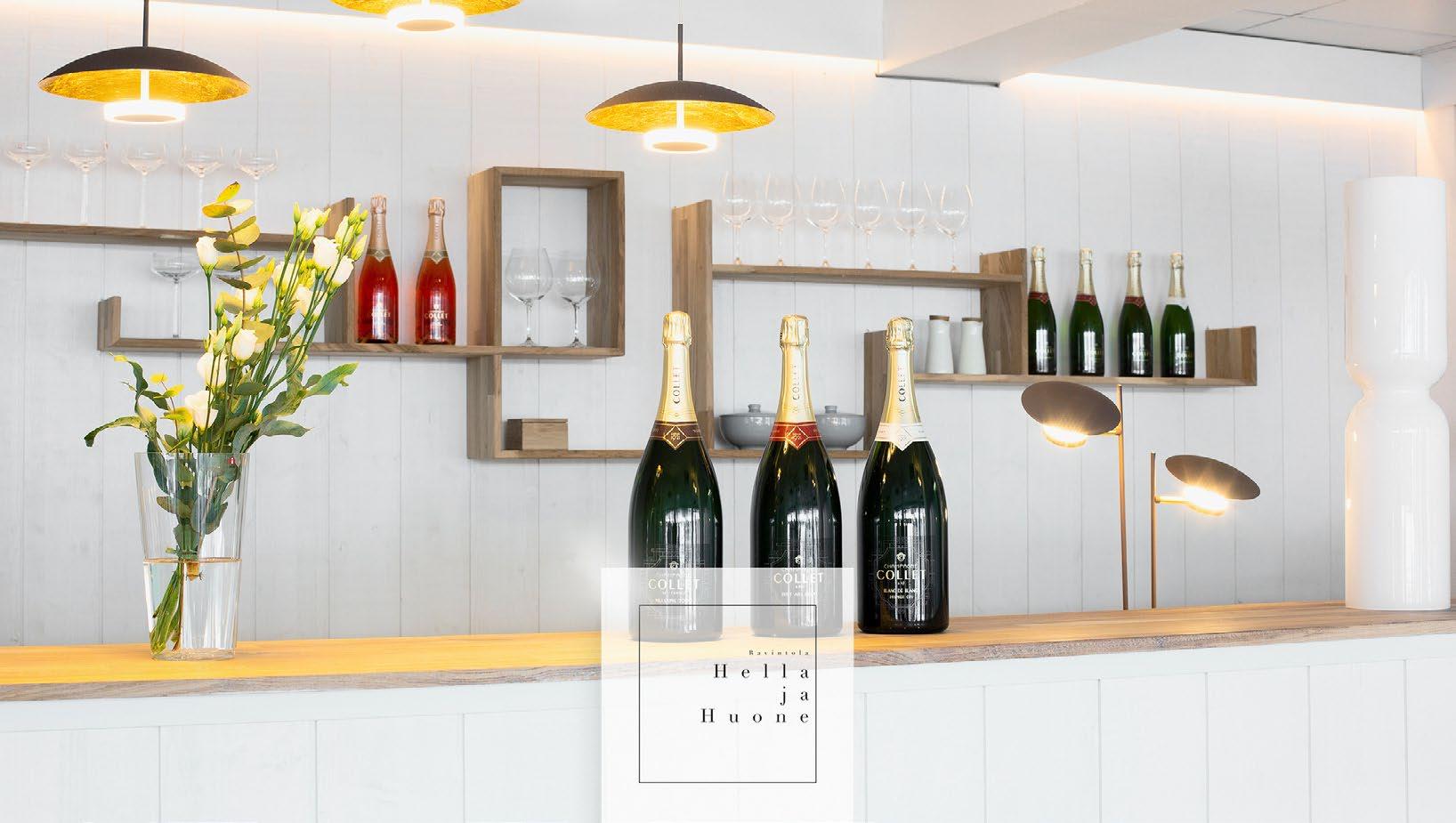


..or modern fine dining with Scandinavian twist" 03 2255505 info@piemonte fi www piemonte fi 010 3223898 ravintola@ hellajahuone fi www hellajahuone fi "Whether you wish for an authentic Italian dinner.. Ravintola Piemonte Suvantokatu 9 33100 Tampere Hella ja Huone Aleksanterinkatu 31 33100 Tampere 28* 29 30
AUTHENTIC JAPANESE FOOD IN TAMPERE
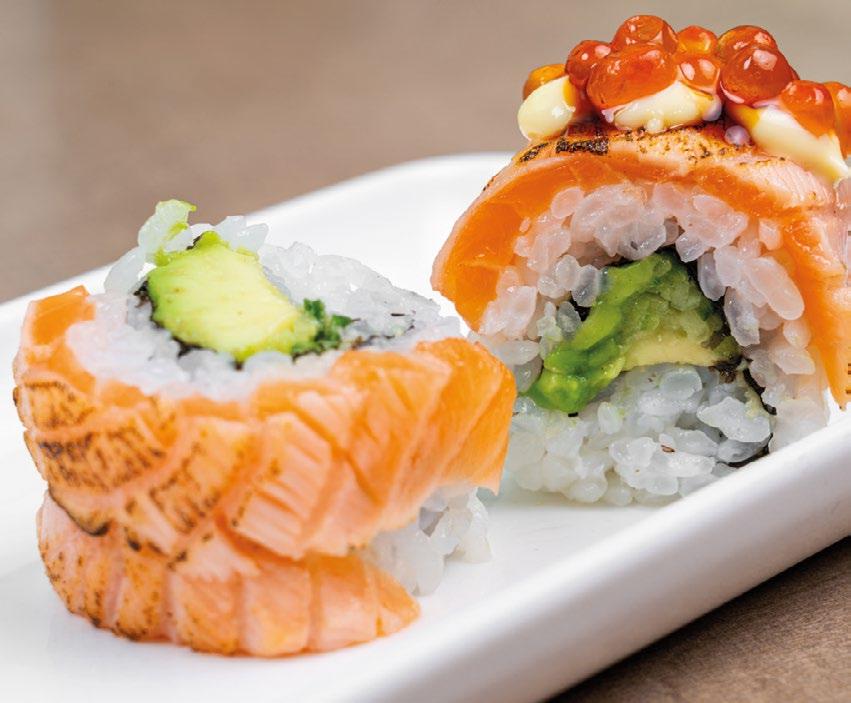







TAKE AWAY AND DELIVERY OPTIONS AVAILABLE!



Joka päivä reilu ULKOFILEPIHVI lempiperunoittesi ja salaatin kera alk. Every day a steak from Open Monday-Saturday 10.30-20.00 Sunday 11.00-19.00 www.manhattansteakhouse.fi 850 450 STEAK HOUSE Talon viini Wine of the house /12cl When you want to feast quickly and reasonably! Kun haluat herkutella nopeasti ja edullisesti! 3. floor TERVETULOA HYVÄN RUOAN JA PALVELUN PARIIN Avoinna: Ti-Pe klo 11.00-22.00 La klo 12.00-22.00 ENJOY THE GOOD FOOD AND GREEK ATMOSPHERE Open: Tuesday-Friday 11.00-22.00 Saturday 12.00-22.00 www.antika.fi SOITA 03 2141 282 Väinölänkatu 1,33100 TAMPERE Maka Sushi Näsilinnankatu 30 Tampere Tel: +358 40 130 68 55 makasushi.fi mon–thu 11–21 fri 11–22 sat 12–21 sun closed
31 33 32







34 35















































 Vuolteenkatu 1, TAMPERE Next to the Tampere Bus Station – 5 minutes from the Tampere Railway Station ratina.fi kauppakeskusratina kauppakeskus_ratina
Vuolteenkatu 1, TAMPERE Next to the Tampere Bus Station – 5 minutes from the Tampere Railway Station ratina.fi kauppakeskusratina kauppakeskus_ratina





















































































































































































































